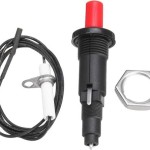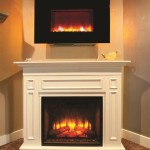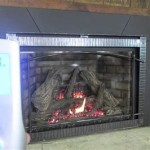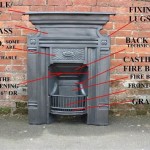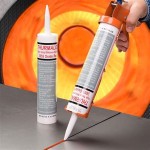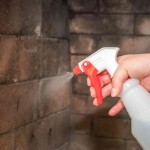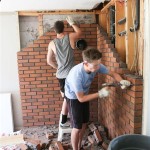Pilot Light Gas Fireplace Always On: Understanding Operation and Potential Issues
A gas fireplace provides supplemental heating and aesthetic appeal, becoming a focal point in many homes. A notable feature of many gas fireplaces, particularly older models, is the continuous operation of the pilot light. This small flame, constantly burning, serves a critical function in initiating the main burner and ensuring the fireplace’s readiness for use. However, the perpetual presence of the pilot light raises questions regarding energy consumption, safety considerations, and potential malfunctions. This article aims to provide a comprehensive understanding of the purpose of a constantly burning pilot light in a gas fireplace, explore potential problems associated with this system, and outline relevant troubleshooting steps.
The pilot light in a gas fireplace is a small, consistent flame that provides the ignition source for the main burner. When the thermostat calls for heat, the gas valve opens, allowing gas to flow to the main burner. The pilot light ignites this gas, producing the larger, more substantial flame that heats the room. Without a functioning pilot light, the main burner cannot ignite, and the fireplace will be rendered inoperable. The constant operation of the pilot ensures that the ignition source is readily available whenever heat is needed, eliminating the need for an external ignition mechanism such as a spark igniter, which is commonly found in newer models.
Originally, the continuous operation of the pilot light was a common and relatively simple solution for ensuring reliable ignition in gas appliances. Before the advent of more sophisticated electronic ignition systems, maintaining a continuously burning pilot light was the most dependable method. This design minimized the complexity of the system and reduced the likelihood of ignition failure, ensuring that the homeowner could consistently rely on the fireplace for heat when required. However, the inherent inefficiency of constantly burning gas has led to the development and adoption of alternative ignition systems in modern gas fireplaces.
While the continuous pilot light system offers reliability, it also presents certain drawbacks. The most significant concern is the consumption of natural gas or propane. Even though the pilot light is small, it constantly consumes fuel, adding to the overall energy bill. Over the course of a year, the cumulative gas consumption of a continuously burning pilot light can be substantial, particularly in regions with milder climates where the fireplace is not frequently used. This constant energy expenditure contributes to increased costs for homeowners and contributes to the depletion of fossil fuel resources.
Another consideration is the potential for elevated room temperatures. The pilot light generates heat, albeit a small amount. In well-insulated homes or during warmer months, this additional heat can contribute to an overall increase in room temperature, potentially leading to discomfort or the need for increased air conditioning, thus increasing overall energy consumption. While the heat generated by the pilot light alone is unlikely to dramatically impact room temperature, it is a factor to consider, especially in smaller spaces.
Understanding the Thermocouple and Thermopile
The thermocouple and thermopile are essential components in a gas fireplace pilot light system, playing a crucial role in safety and functionality. They are heat-sensitive devices that generate a small electrical current when heated by the pilot flame. This current is used to keep the main gas valve open, allowing gas to flow to the main burner when the thermostat calls for heat. If the pilot light goes out, the thermocouple or thermopile cools down, the electrical current ceases, and the gas valve automatically shuts off, preventing the uncontrolled release of gas.
The thermocouple is a simple device consisting of two dissimilar metal wires joined together at one end. When this junction is heated, a small voltage is produced across the wires. This voltage, typically measured in millivolts, is sufficient to hold the gas valve open. The thermopile, on the other hand, is essentially a series of thermocouples connected together to produce a higher voltage output. This higher voltage can be used to power more complex gas valve systems or to control other functions within the fireplace.
A malfunctioning thermocouple or thermopile is a common cause of pilot light problems. If either of these devices fails to generate sufficient voltage, the gas valve will not remain open, and the pilot light will extinguish shortly after the control knob is released. In such cases, the thermocouple or thermopile needs to be inspected and potentially replaced to restore proper fireplace operation. Regular maintenance, including cleaning and visual inspection, can help to prevent premature failure of these critical components.
Troubleshooting Common Pilot Light Issues
Several issues can arise with a gas fireplace pilot light, leading to operational problems. One of the most common problems is the pilot light extinguishing shortly after being lit. This often indicates a problem with the thermocouple or thermopile, as described earlier. Another frequent issue is a weak or flickering pilot flame. This can be caused by a dirty pilot light orifice, low gas pressure, or a partially blocked gas line. A yellow or orange flame, rather than a crisp blue flame, can also indicate incomplete combustion, potentially leading to the production of carbon monoxide.
Before attempting any troubleshooting, it is crucial to ensure that the gas supply to the fireplace is turned on and that there are no leaks. A simple soap and water solution can be used to check for leaks around gas fittings. If a leak is detected, the gas supply should be turned off immediately, and a qualified technician should be contacted to repair the leak. Additionally, the area around the fireplace should be well-ventilated during troubleshooting to prevent the accumulation of potentially hazardous gases.
If the pilot light is consistently extinguishing, the thermocouple or thermopile should be inspected. Check for any signs of damage, such as corrosion or loose connections. The thermocouple or thermopile can be tested using a multimeter to measure the voltage output. If the voltage is below the manufacturer's specifications, the device should be replaced. Cleaning the pilot light assembly, including the orifice, can also help to resolve issues with a weak or flickering flame. A small brush or needle can be used to carefully remove any debris that may be obstructing the gas flow.
Exploring Modern Ignition Systems and Alternatives
Due to the energy inefficiency of continuously burning pilot lights, modern gas fireplaces often incorporate alternative ignition systems. These systems typically utilize electronic ignition methods, such as spark ignition or hot surface ignition. Spark ignition systems use an electrode to generate a spark that ignites the gas when the thermostat calls for heat. Hot surface ignition systems use a heating element to heat up to a high temperature, igniting the gas upon contact. These systems eliminate the need for a continuously burning pilot light, resulting in significant energy savings.
Many older gas fireplaces can be retrofitted with electronic ignition systems. This retrofit can involve replacing the existing pilot light assembly with an electronic ignition module. While the initial cost of the retrofit may be substantial, the long-term energy savings can often justify the investment. Furthermore, electronic ignition systems offer added convenience, as they typically include features such as automatic reignition in case of flame failure. This ensures that the fireplace remains operational even if the power is interrupted or if the gas supply is temporarily disrupted.
Another alternative to the traditional pilot light system is the intermittent pilot ignition (IPI) system. In an IPI system, the pilot light is only lit when the thermostat calls for heat. When heat is not required, the pilot light is extinguished, saving energy. IPI systems typically use an electronic sensor to detect the presence of the pilot flame. If the flame is extinguished for any reason, the system will automatically attempt to reignite it. IPI systems offer a balance between energy efficiency and reliability, making them a popular choice in modern gas fireplaces.
The decision of whether to retrofit an existing gas fireplace with an electronic ignition system or an IPI system depends on various factors, including the age of the fireplace, the frequency of use, and the homeowner's budget. Consulting with a qualified HVAC technician is recommended to assess the feasibility and cost-effectiveness of different options. A technician can evaluate the existing fireplace system, provide recommendations based on specific needs, and ensure that the installation is performed safely and correctly.
In summary, understanding the purpose and operation of the pilot light in a gas fireplace is essential for ensuring safe and efficient operation. While the continuously burning pilot light offers reliability, it also presents drawbacks in terms of energy consumption and potential safety hazards. Troubleshooting common pilot light issues, exploring modern ignition systems, and consulting with qualified professionals can help homeowners optimize the performance and efficiency of their gas fireplaces.

Should I Turn Off The Pilot Light In Spring B C Comfort Fireplace Hvac Repair Installation

Best And No 1 Pilot Light Elegant Fireside Patio

Is It Okay To Leave A Pilot Light On For Gas Fireplace

Is It Okay To Leave A Pilot Light On For Gas Fireplace

Gas Fireplace Won T Stay Lit Magic Touch Mechanical
Is It Okay To Leave A Pilot Light On Gas Fireplace Overnight Quora

How To Fix A Pilot Light In Your Gas Fireplace Vertical Chimney Care

Should You Turn Off The Pilot On Your Fireplace This Summer

How To Light Pilot Gas Fireplace All Valley Repair
My Gas Fireplace Pilot Light Works Perfectly However When I Flip The Switch For Rest Of To Turn On Nothing Happens What Quora
Related Posts

